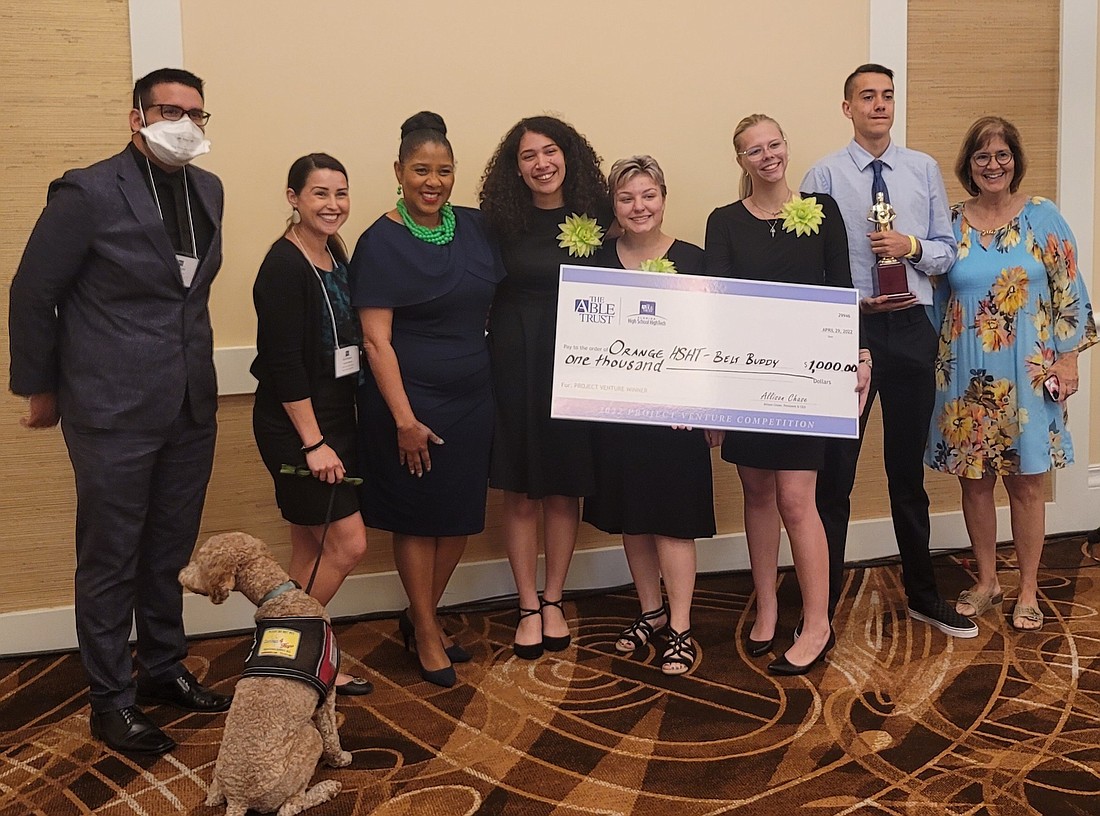- December 26, 2024
-
-
Loading

Loading

Students in the High School High Tech team at Windermere High are celebrating a state win after taking first place in the Project Venture competition. The students of Erma Brathwaite-LaMotta developed the Belt Buddy, a seatbelt accessory that relays messages in emergencies or shares a fun or inspiring message.
The Able Trust High School High Tech is a transition-planning class that provides high school students with disabilities the opportunity to explore jobs or post-secondary education and prepares them for life after high school. This is the fourth year for it at Windermere.
The class is comprised of sophomores, juniors and seniors who already have taken a learning strategies class for one year.
“As part of our HSHT program, students are encouraged as a group to do a school-based enterprise, and it’s really to give students background on the world of work,” Brathwaite-LaMotta said. “We have kids who are employed, and we have kiddos who aren’t, and they can’t for various reasons. But in school-based enterprise, they can get experience in work.”
“They had to come up with a business, come up with a product, submit a business plan; they had to create a commercial, and then after that they had to create this presentation about the product,” Brathwaite-LaMotta said. “So, before the judges even saw all of that, there were other people from the class who were working.
“It really gives them good experience,” she said. “You have a sales team, production team, marketing team, accounting team, all these different levels of students. It gives them an experience you would get if you had a regular job. There are kids who like working with computers, so they can create the logo. Everybody has their job.”
The five students who were on the presentation team were Valeria Aviles, Lindsey Folco, Natalie Maragliano, Jordan McIlwain and Jaycee Moser. But it took more than just those five to make the project work. Other students who assisted with Belt Buddy are Matthew Turchin, Reggie Martin, Sebastian Perez-Intriago, Keagan Gonsalves and Caroline Kopelousos.
The first prototype was made of paper, laminated and attached to the seatbelt with Velcro. For the 2.0 version, Brathwaite-LaMotta said they went a step further, visiting a fabric store and discovering a neoprene fabric that would work better for ironing on the desired letters. One student suggested putting a survey on social media, and this garnered about 500 responses.
“What impressed the judges (were) the testimonials from the parents and our first responders and law enforcement,” Brathwaite-LaMotta said. “That’s what really put us over.”
Brathwaite-LaMotta said she is grateful for Leanne Rexford and Franco Frazzetta and their assistance during the months-long process.
“When we came back from spring break, that’s all we did,” she said. “The kids were really committed to it.”
The first-place prize included $1,000 for the program, which will help fund the school-based enterprise for the next school year.